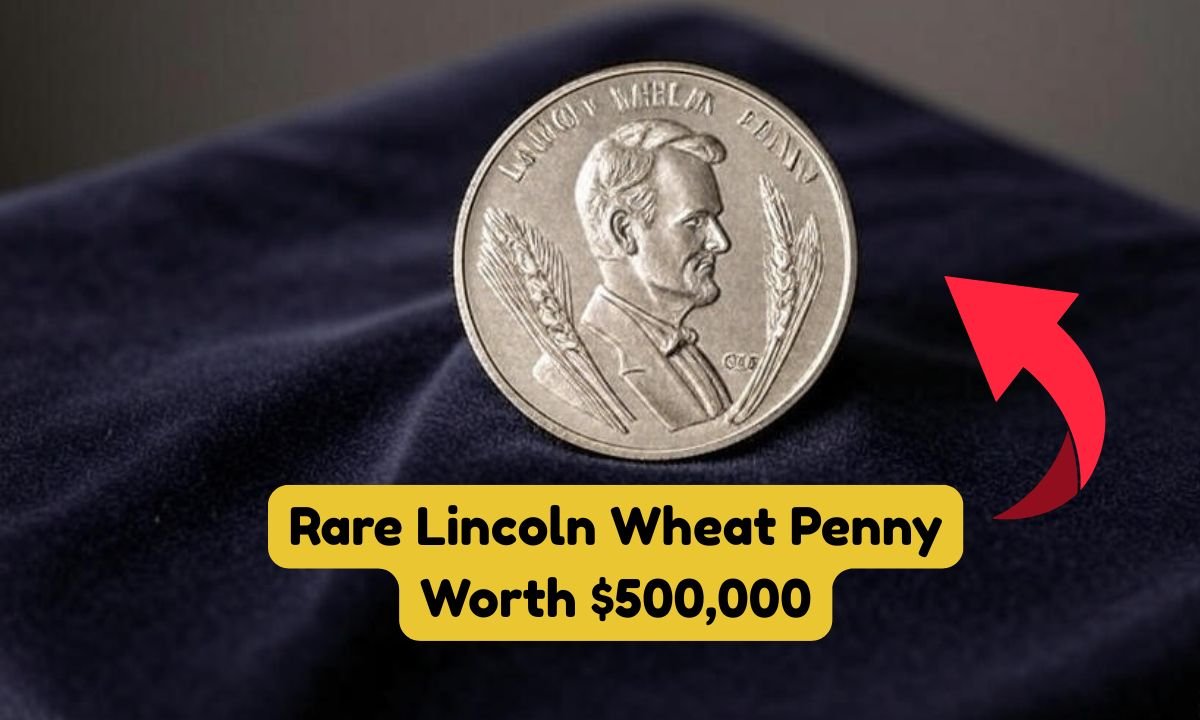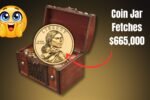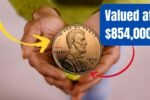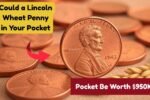Imagine reaching into your pocket, pulling out a penny, and discovering it’s worth half a million dollars! Sounds like a dream, right? But believe it or not, there’s a chance you could be carrying a rare Lincoln Wheat Penny that collectors would pay a fortune for. These tiny treasures, minted between 1909 and 1958, are more than just spare change—they’re pieces of history that could change your life. Let’s dive into the world of these valuable coins, learn what makes them so special, and find out how you can spot one in your own pocket.
What’s a Lincoln Wheat Penny, Anyway?
Picture a penny with Abraham Lincoln’s face on one side and two wheat stalks on the back. That’s the Lincoln Wheat Penny, first made in 1909 to celebrate Lincoln’s 100th birthday. Designed by Victor David Brenner, it was the first U.S. coin to feature a real person instead of a symbol like Lady Liberty. These pennies were made for nearly 50 years, and billions were tossed into circulation. Most are worth just a cent, but a few rare ones are like finding a golden ticket in a chocolate bar—super valuable!
Why are they called “Wheat Pennies”? The wheat stalks on the back give them their nickname, and they’ve got a nostalgic, old-school vibe that collectors love. But it’s not just their looks that make them special—it’s the rare mistakes and limited editions that can turn a penny into a payday.
Why Are Some Wheat Pennies Worth So Much?
Ever wonder why one penny could be worth more than a fancy car? It’s all about rarity, condition, and a sprinkle of history. Some Lincoln Wheat Pennies are super rare because of minting errors or low production numbers. For example, during World War II, the U.S. Mint switched to steel pennies to save copper for the war. But a few 1943 pennies were accidentally made in copper instead of steel. These mistakes are like rare Pokémon cards—only a handful exist, and collectors go wild for them!
Another big player is the 1909-S VDB penny. The “S” means it was minted in San Francisco, and “VDB” stands for the designer’s initials, Victor David Brenner. Only about 484,000 of these were made, making them super scarce. If you find one in great condition, it could fetch up to $500,000 at auction! The condition matters a lot, too—coins that look brand new are worth way more than worn-out ones.
How to Spot a Valuable Lincoln Wheat Penny
So, how do you know if your penny is a hidden gem? First, grab a magnifying glass and check the year. Key dates to look for include 1909-S VDB, 1914-D, and 1943 (the copper one). Next, look for a mint mark—a tiny letter under the date. “S” is for San Francisco, “D” is for Denver, and no letter means Philadelphia. Rare pennies often come from specific mints, like the 1909-S VDB.
Here’s a fun trick: if you’ve got a 1943 penny, test it with a magnet. Steel pennies stick, but the super-rare copper ones don’t. Also, look for errors, like doubled letters or numbers (called “doubled die”). The 1955 Doubled Die penny is a famous one, with blurry text that makes it stand out. If you spot anything unusual, like odd colors or missing marks, you might be holding a winner!
Where Could You Find These Pennies?
Think finding a $500,000 penny is impossible? Not quite! These coins are still out there, hiding in plain sight. You might find one in your change jar, an old coin collection, or even at a flea market. People have stumbled across valuable pennies in piggy banks or inherited stashes. In 2019, someone found a 1943 copper penny in a family collection that sold for over $200,000! It’s like finding a needle in a haystack, but it happens.
Check your spare change when you buy coffee or groceries. Visit coin shops, estate sales, or even ask your grandparents if they’ve got old pennies lying around. You never know when luck might strike!
How to Cash In on Your Find
Found a penny that looks promising? Don’t spend it yet! Take it to a professional coin dealer or get it appraised by a grading service like PCGS or NGC. They’ll check if it’s real and tell you its value. Selling a rare penny can be done through auctions, online platforms like eBay, or directly to collectors. Just be careful of fakes—some people try to pass off altered coins as the real deal.
Conclusion
The Lincoln Wheat Penny is more than just pocket change—it’s a piece of history with the potential to make you rich. Whether it’s a 1943 copper penny or a 1909-S VDB, these rare coins could be hiding in your wallet right now. So, next time you get some change, take a closer look. Who knows? That little penny might just be your ticket to a life-changing fortune. Start your treasure hunt today, and maybe you’ll be the next person to strike it rich!
FAQs
What makes a Lincoln Wheat Penny valuable?
Rarity, minting errors, and condition make some pennies worth a lot. Coins like the 1943 copper penny or 1909-S VDB are super rare.
How do I know if my 1943 penny is copper?
Use a magnet! Steel pennies stick, but copper ones don’t. If it’s copper, get it appraised.
Where can I sell a rare penny?
Try coin dealers, auctions, or online platforms like eBay, but always get it checked by a professional first.
Are all Lincoln Wheat Pennies valuable?
No, most are worth just a cent. Only specific years, mint marks, or errors are worth big money.
Can I still find these pennies in circulation?
Yes! They sometimes show up in change, old collections, or at flea markets.




